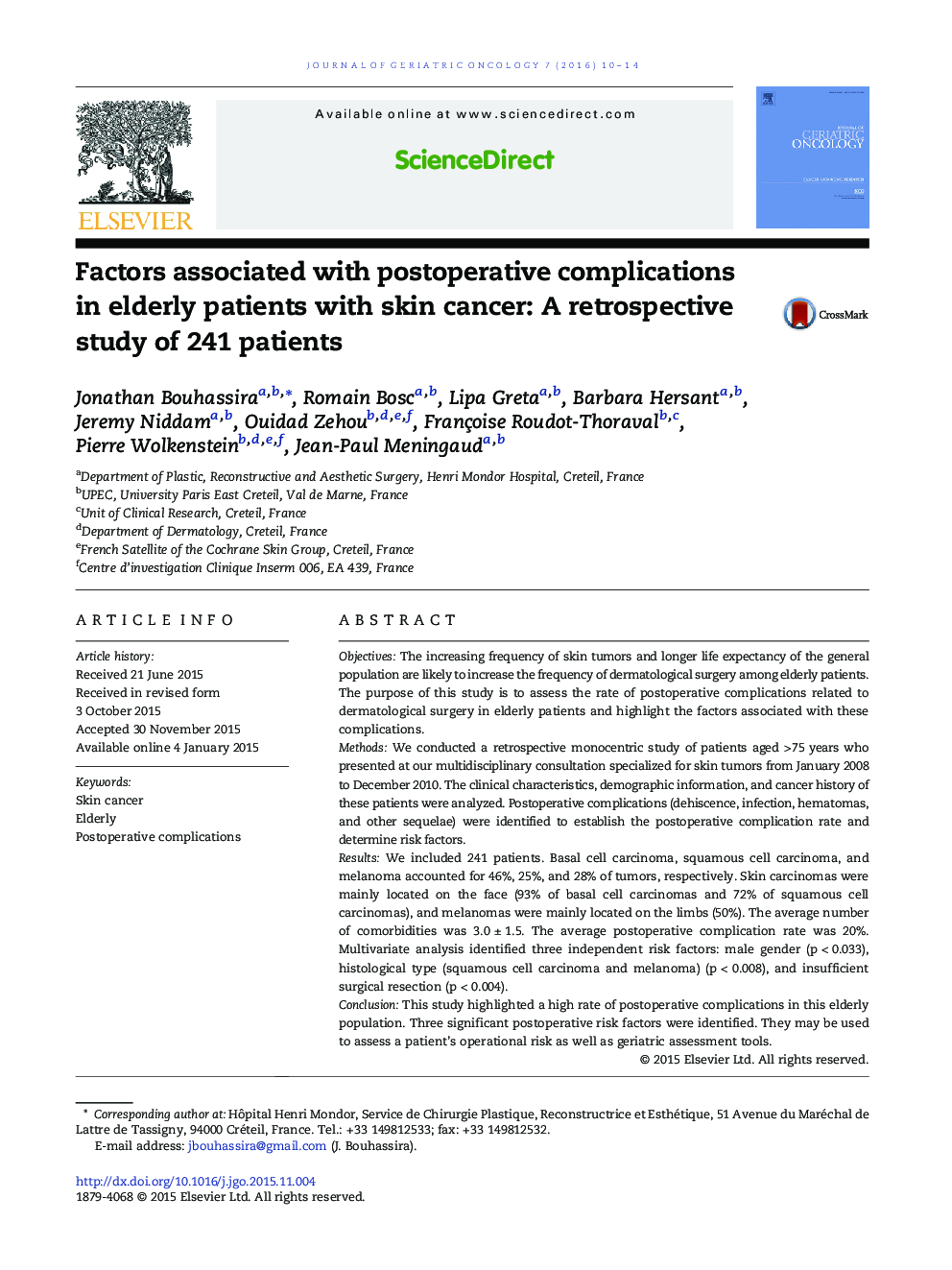| Article ID | Journal | Published Year | Pages | File Type |
|---|---|---|---|---|
| 1912237 | Journal of Geriatric Oncology | 2016 | 5 Pages |
ObjectivesThe increasing frequency of skin tumors and longer life expectancy of the general population are likely to increase the frequency of dermatological surgery among elderly patients.The purpose of this study is to assess the rate of postoperative complications related to dermatological surgery in elderly patients and highlight the factors associated with these complications.MethodsWe conducted a retrospective monocentric study of patients aged > 75 years who presented at our multidisciplinary consultation specialized for skin tumors from January 2008 to December 2010. The clinical characteristics, demographic information, and cancer history of these patients were analyzed. Postoperative complications (dehiscence, infection, hematomas, and other sequelae) were identified to establish the postoperative complication rate and determine risk factors.ResultsWe included 241 patients. Basal cell carcinoma, squamous cell carcinoma, and melanoma accounted for 46%, 25%, and 28% of tumors, respectively. Skin carcinomas were mainly located on the face (93% of basal cell carcinomas and 72% of squamous cell carcinomas), and melanomas were mainly located on the limbs (50%). The average number of comorbidities was 3.0 ± 1.5. The average postoperative complication rate was 20%. Multivariate analysis identified three independent risk factors: male gender (p < 0.033), histological type (squamous cell carcinoma and melanoma) (p < 0.008), and insufficient surgical resection (p < 0.004).ConclusionThis study highlighted a high rate of postoperative complications in this elderly population. Three significant postoperative risk factors were identified. They may be used to assess a patient's operational risk as well as geriatric assessment tools.
